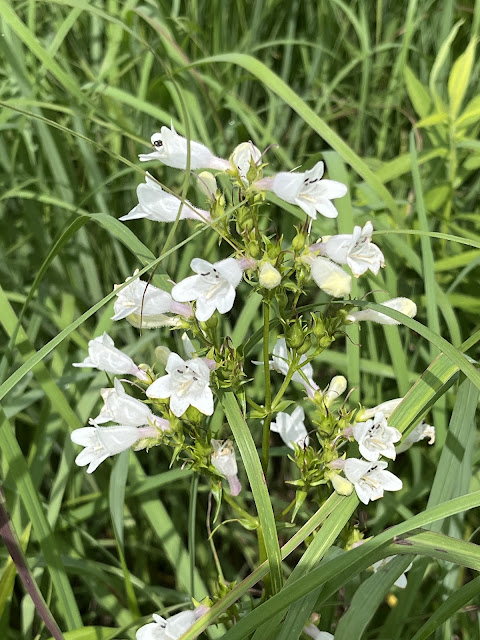Foxglove beardtongue (Penstemon digitalis) is a hardy perennial wildflower native to the eastern North America, and can be found naturalized throughout Wisconsin. It grows to a height of three to five feet, producing clusters of delicate white to pale pink flowers that are tubular and two-lipped, resembling foxgloves. These blossoms attract a variety of pollinators, including bees, butterflies, and hummingbirds, making the plant a valuable addition to pollinator gardens. Its deep green, lance-shaped leaves grow in opposite pairs along the stem, with basal leaves forming a rosette. Foxglove beardtongue thrives in a range of habitats, such as prairies, meadows, woodland edges, fields, and disturbed areas like roadsides and powerline corridors. It prefers full sun to partial shade and well-drained soils, making it an ideal choice for both natural landscapes and cultivated gardens.
In Wisconsin, this wildflower plays an important role in gardens and ecological restoration projects. Its adaptability and low maintenance requirements make it a popular choice for native plant gardens, where it provides seasonal interest and supports local biodiversity. Because it is drought-tolerant and capable of growing in a variety of soil conditions, foxglove beardtongue is often used in prairie restoration efforts to help reestablish native plant communities. Its deep root system stabilizes soil, making it useful for erosion control in areas where soil disturbance is a concern. (LS)
